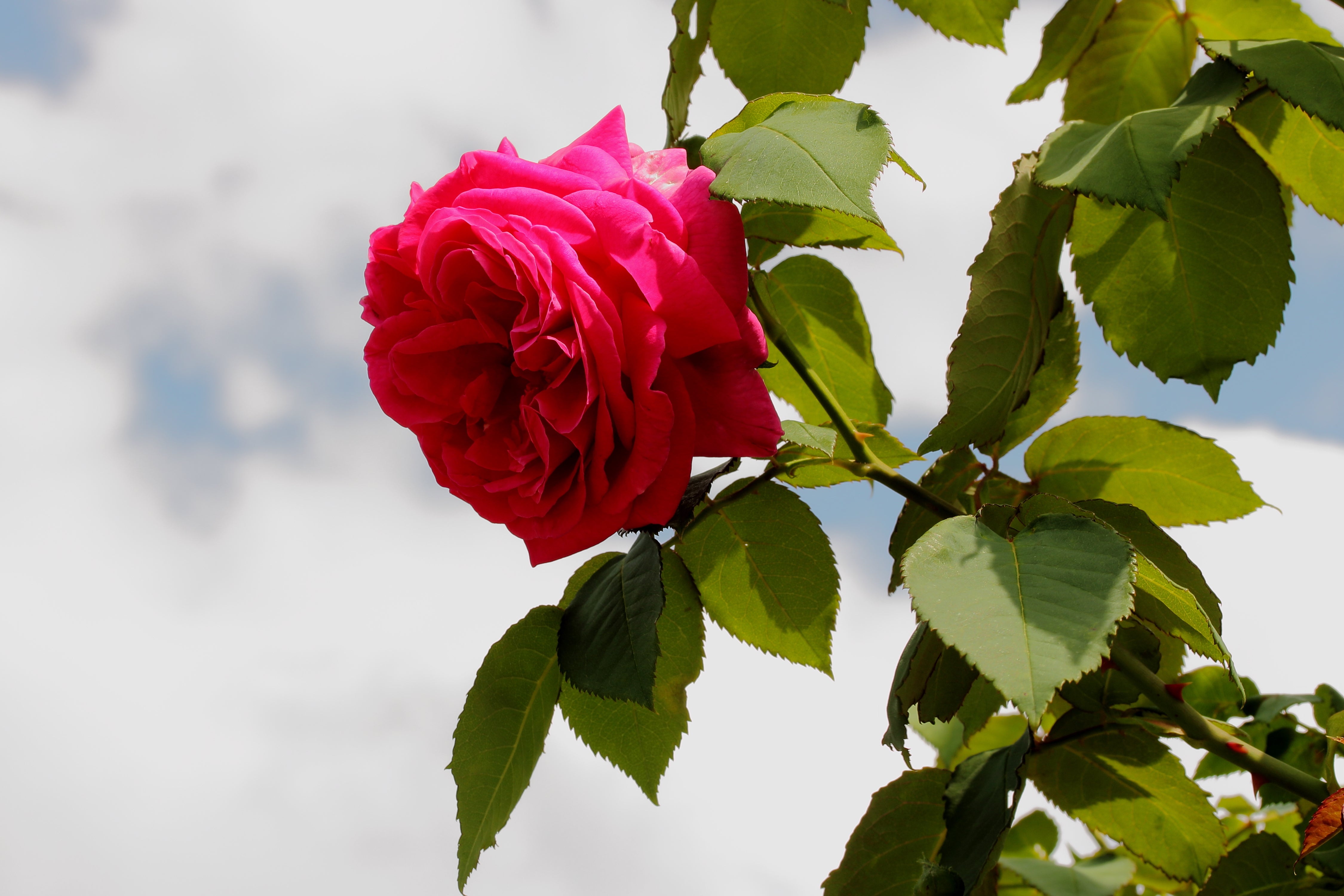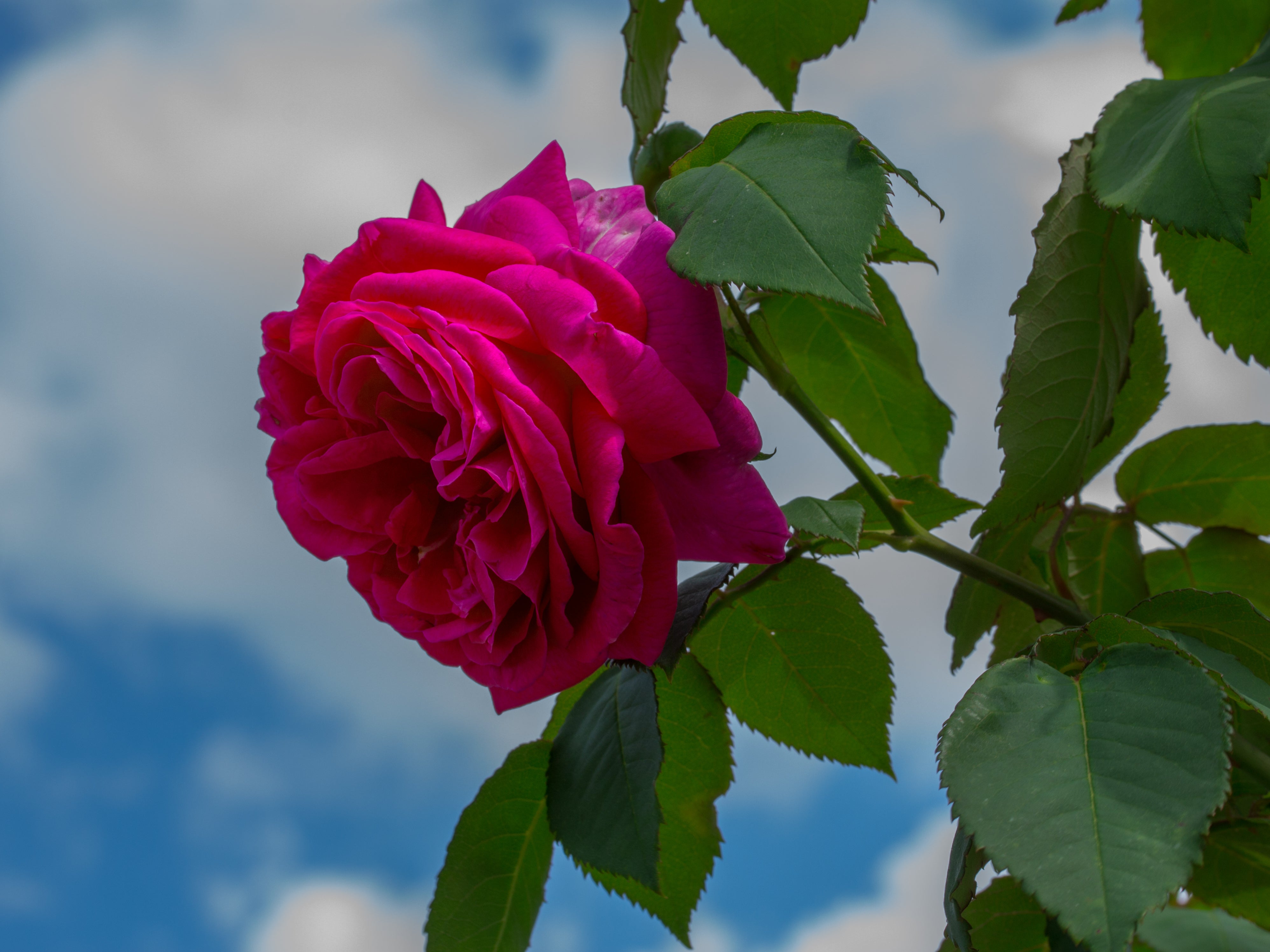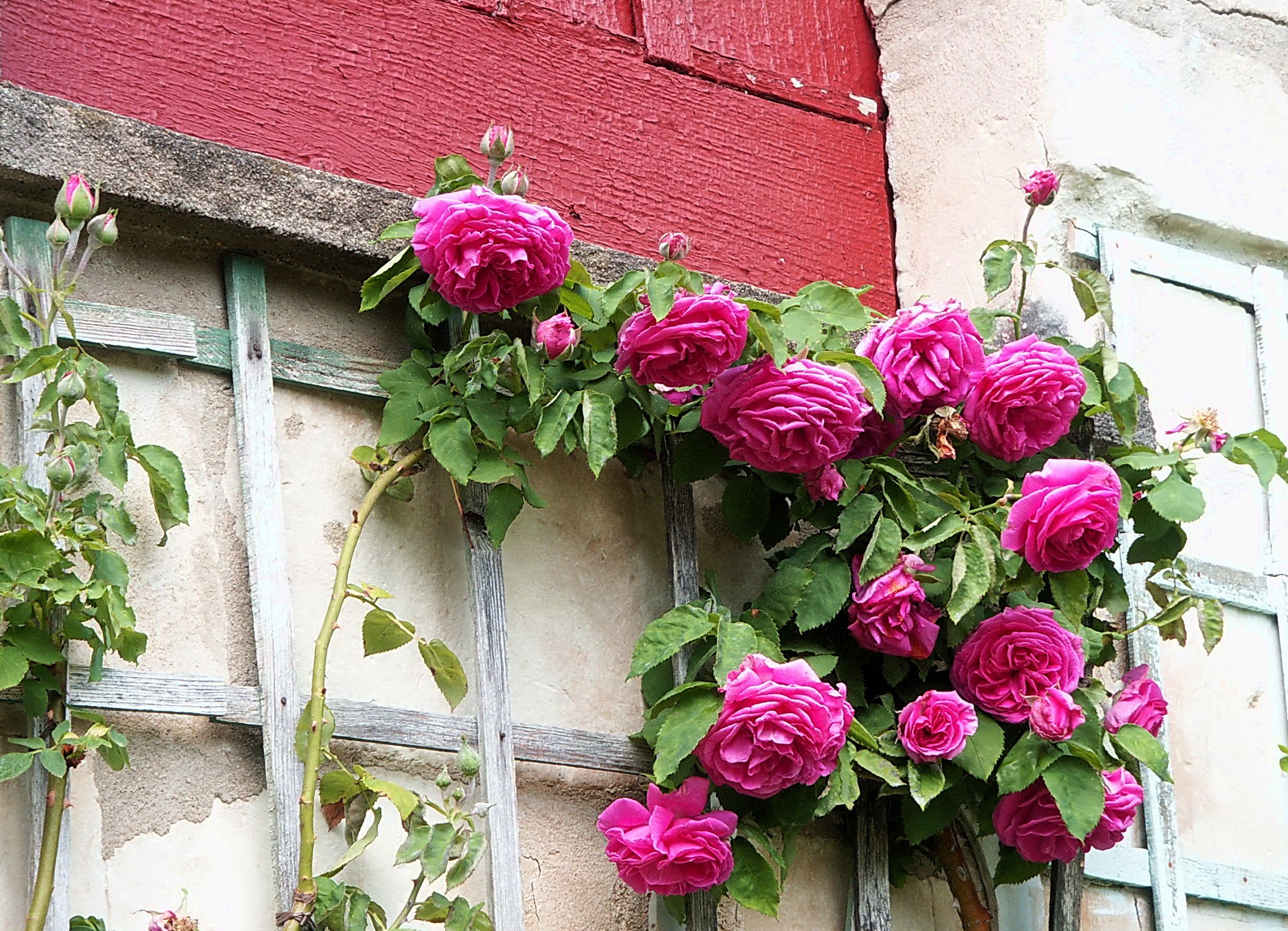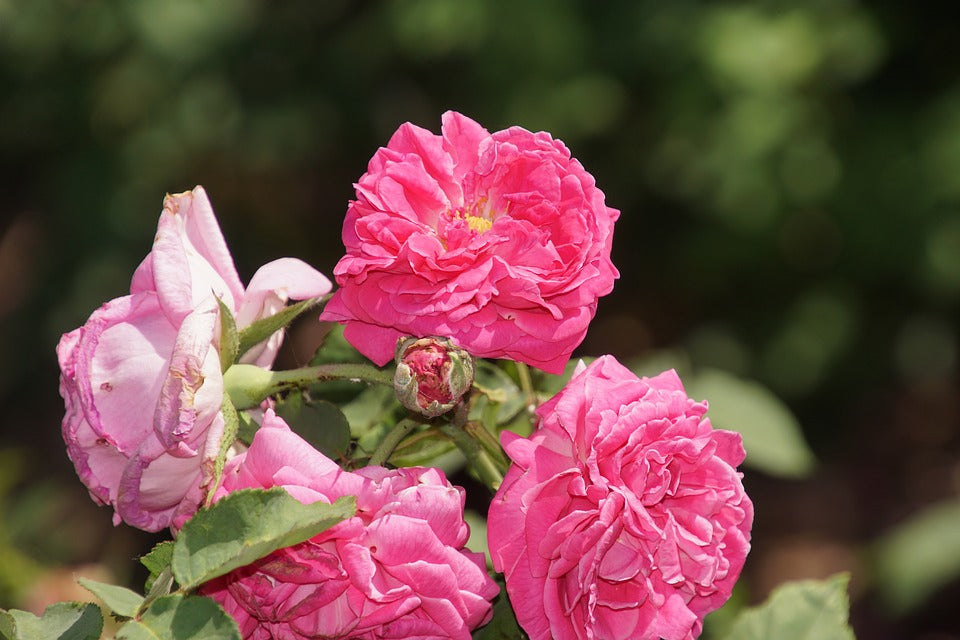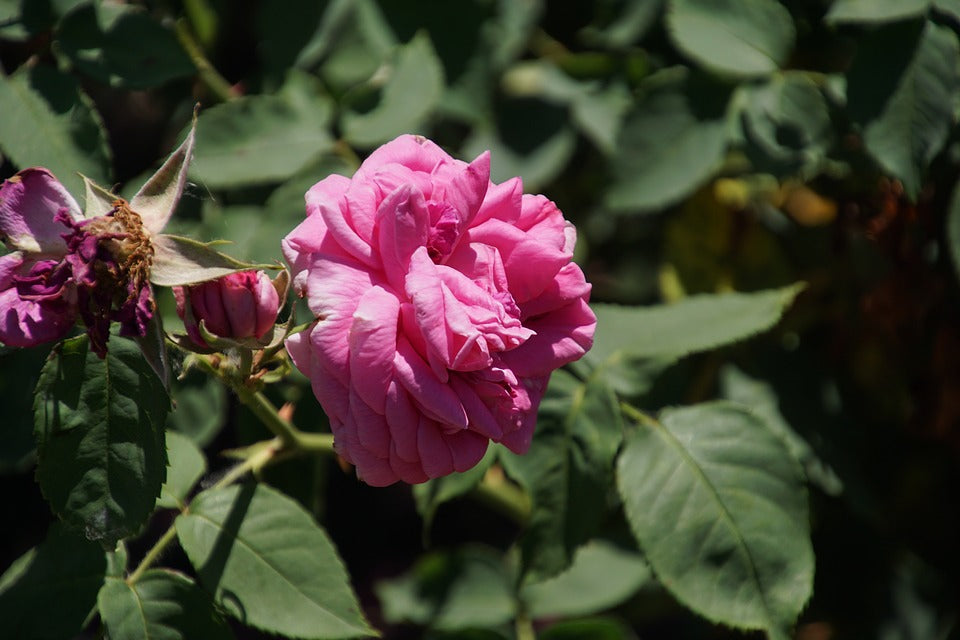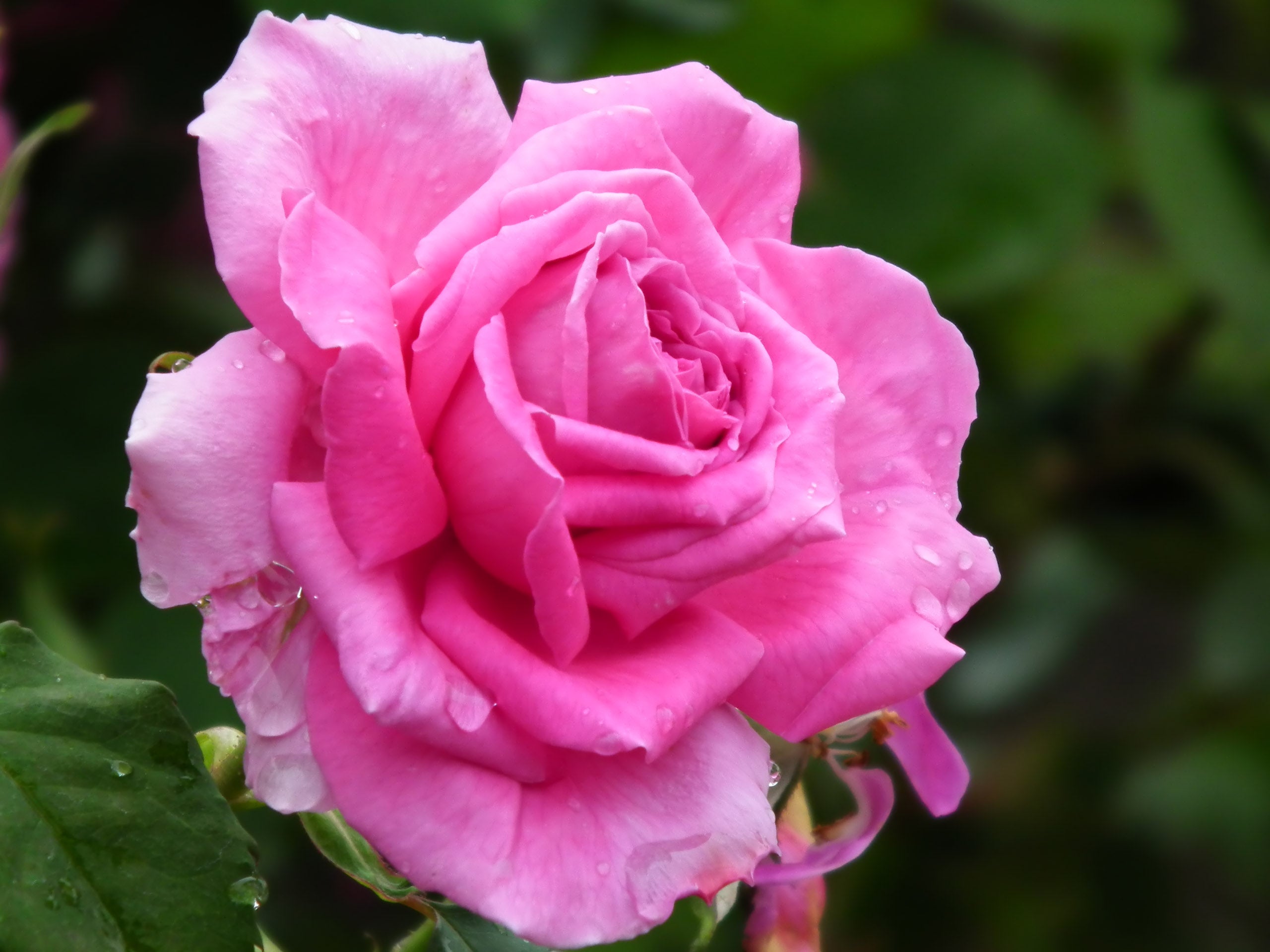Rosa 'Madame Isaac Péreire' (ClBb)
Approx. 0.5 litre pot
About this cultivar:
Rosa 'Madame Isaac Péreire' (ClBb) is a robust medium-sized shrub of open arching habit with bold foliage and richly fragrant, double, cupped and partly quartered, deep rose-pink flowers in summer and autumn. Its bewitching fragrance with peppery and spicy notes makes it “certainly one of the most perfumed rosebushes” according to Graham Thomas. “Perfection of form”, says french writer Charlotte Testu.
It has an interesting history! According to the Association Les Amis de la Roseraie du Val-de-Marne:
"‘Mrs. Isaac Pereire’ rose is well known to all amateurs of old roses. It is famous for its large flowers and its heady fragrance. However, few people know that the real name of the rose is ‘The Blessed De La Salle’.
One theory holds that the name is in homage to Jean-Baptiste de La Salle, who set up the order of Christian School Brethren by whom the breeder, Armand Garçon, may have been taught.
It all began when Armand Garçon, a young garden labourer living in Rouen, started to breed roses, one of which he named ‘The Blessed De La Salle’. Proud of his work, he presented his varieties at the meetings of the Société Centrale d’Horticulture de Rouen (Rouen Central Horticultural Society), which decided to exhibit his creations at the Paris Universal Exhibitions of 1867 and 1878. That was how Armand won the first prize for transplanted roses.
However, Armand Garçon preferred to sell most of his varieties to rose-growers in the Paris area, in particular to Margottin Fils, a firm that bought “The Blessed De La Salle’. Margottin Fils re-named the rose ‘Mrs. Isaac Pereire’, in homage to the wife of the famous financier who had passed away a year earlier.
In 1882, the Botanical Society of the British Isles organised a competition in London. Margottin Fils won a prize for the ‘Mrs. Isaac Pereire’. On learning the news, the Société Centrale d’Horticulture de Rouen wrote to the Botanical Society of the British Isles, explaining the rose’s history and asking that the prize be awarded to Armand Garçon, the real breeder of the rose. The breeder’s name was re-instated, but the rose that won under the name ‘Mrs. Isaac Pereire’ had its name unchanged!"
- Position: Full sun, partial shade
- Soil: Almost any soil, grows well in Ballyrobert
- Flowers: June, July, August, September
- Other features: Scented
- Hardiness: Fully hardy, grows well in Ballyrobert, H7 - Hardy in the severest European continental climates (< -20°C)
- Habit: Climbing
- Foliage: Deciduous
- Height: 60 - 300 cm (1 - 10 ft) prune to your liking
- Spread: 60 - 300 cm (1 - 10 ft) prune to your liking
- Time to full growth: 2 to 5 years
- Plant type: Shrub, rose, climber
- Colour: Green, pink
- Goes well with: Aster, Geranium
About this genus:
Rosa is a woody perennial within the Rose family (Rosaceae). What is there to say? There are over 100 species and thousands of cultivars. They form a group of plants that can be erect shrubs, climbing or trailing with stems that are often armed with sharp prickles. Flowers vary in size and shape and are usually large and showy, in colours ranging from white through yellows and reds. Most species are native to Asia, with smaller numbers native to Europe, North America, and northwest Africa.
The name rose comes from French, itself from Latin rosa, which was perhaps borrowed from the Greek ródon. The ancient Greeks and Romans identified the rose with the goddess of love, Aphrodite (Greek name) and Venus (Roman name). In Rome a wild rose would be placed on the door of a room where secret or confidential matters were discussed. The phrase sub rosa, or "under the rose", means to keep a secret — derived from this ancient Roman practice.
The aggregate fruit of the rose is a berry-like structure called a rose hip. Rose hips are occasionally made into jam, jelly, marmalade, and soup or are brewed for tea, primarily for their high vitamin C content. They are also pressed and filtered to make rose hip syrup. Many Rosa cultivars do not produce hips, as the flowers are so tightly petalled that they do not provide access for pollination. Poor little bees. Rose perfumes are made from rose oil, which is a mixture of volatile essential oils obtained by steam distilling the crushed petals of roses. About two thousand flowers are required to produce one gram of oil! Rose petals also have a variety of culinary uses; from teas to salads and scones to ice creams
Ornamental roses have been cultivated for millennia, with the earliest known cultivation known to date from at least 500 BC in Mediterranean countries, Persia, and China. In the early 19th century the Empress Josephine of France patronized the development of rose breeding at her gardens at Malmaison. As long ago as 1840 a collection numbering over one thousand different cultivars was recorded at Abney Park in England.
As you may have guessed it is hard to be general about growing Roses. However, rest assured that all the roses we sell have been trialled and grown in our own wet clay soil garden at Ballyrobert in either full-sun or part-shade. We've chosen the ones that do best with us. Hopefully that should give you a bit of confidence or guidance!
We normally tie ramblers up walls or fences instead of climbers since ramblers are often more floriferous.
- Reviews
- Questions

